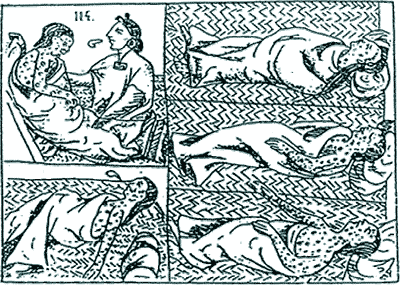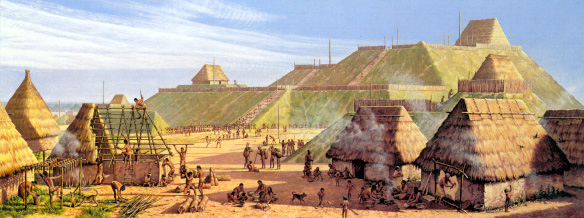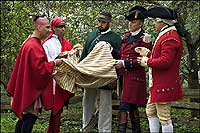Read for the argument--how does Crosby prove his points
- cause and effect
- natural experiments--if the conditions were different was the outcome different
- science of ecology: for example European crops needed bees
- argue from exceptions or extreme examples that illustrate a point clearly
Third part of the story of the ecological success of the Europeans in the neo-Europes
- why in some places but not others were the Europeans able to nearly eliminate the native population
- there were more natives with more sophisticated civilization than we often realize
- disease is key--many
different diseases and it is hard to tell which killed
the most people
we know more about it just because it is easy to identify
- endemic=widespread and constantly present
- spreads from person
to
person but can be spread by dry material for many months
- in Europe people usually got smallpox before they were 2, 10-15% died
- in somewhat more
isolated
areas outbreaks happened about every 5 years (in later
colonial America
the density wasn't high enough for smallpox to be
endemic and there
were dangerous epidemics among the colonists)
- the neo-Europes were
isolated places where the disease was not already
present
- because of lack of immunity among the native people it became an epidemic
- among natives not previously exposed, 1/3 to 1/2 died
- The death rate in many Indian communities was even higher than that because of starvation or unhelpful disease treatment traditions, such as sweat baths
- people living in
isolated
areas with few diseases may have evolved weaker or less
diverse immune
systems
"The role of disease in
American
conquest was threefold: firstly, it reduced the fighting
capability of
the Aztec and Incan armies as they became sick and died.
Secondly, the
deaths of their heads of political leadership left power
vacuums, and
much of the attention of vassal leaders was occupied with
civil wars.
The conquistadors played factions against each other.
Thirdly, the
prevailing beliefs of these cultures led them to believe
that the
European forces were employing supernatural powers, and many
military
leaders decided to either join the conquistadors, or flee,
rather than
fight them. Consequently, resistance was weak, disorganized,
and
usually nonexistent." (Graeme Kennedy)
What we think of as the indian civilization in North America is actually what was left after diseases had done much harm
the southeastern US had a dense elaborate native civilization before Columbus, perhaps as sophisticated as the Mayans
- Mississippi Moundbuilders approx. 900-1550 AD
- closest major site
is Etowah
Mounds in
northern Georgia
- they didn't use much stone for building and the settlers didn't meet them so we know little about them
- elaborate pottery
and stone
tools
- they had cities and
systems
of government
- that civilization was wiped out and the land significantly depopulated before settlers arrived
- that was the result of Europeans diseases which spread faster than settlers did
- the settlers found a
land
with very low population--with an empty ecological niche
ready for
human beings--their competition had already been wiped
out
- the Europeans brought lots of dangerous diseases
- they didn't catch local diseases
- why weren't there local diseases? because there were very few domestic animals and less crowding
- even the theory that syphilis came from the Americas is now debated:
- people in Europe at
the
time believed that syphilis came from the Americas
- there is good evidence of syphilis in Europe before Columbus
- the trick is that the disease has changed over time, sometimes becoming more serious, sometimes less
- a disease can mutate
into
something more dangerous
Neo-Europes had fewer diseases because of less crowded conditions, fewer domestic animals, and isolation
- Europe was more crowded and so epidemic diseases became endemic
- any area where
people
aren't crowded enough for diseases to become endemic
will have problems
with epidemics
- Europeans had more diseases because they had more domestic animals
- and they often
shared the
same building with their animals
- diseases that evolved in different places came together in Europe
- isolated places
didn't see
as many diseases
- Europeans had come
to an
ecological balance with their diseases
it doesn't explain how they were able to remake the entire ecosystem to look like Europe
How we live with diseases--consider chickenpox
- chicken pox isn't a dangerous disease, so we used to just let people catch it
- now we have a vaccination
- it can be dangerous for certain people
- the recommendation
to
vaccinate was justified on cost benefit analysis--lost
work time of
parents


